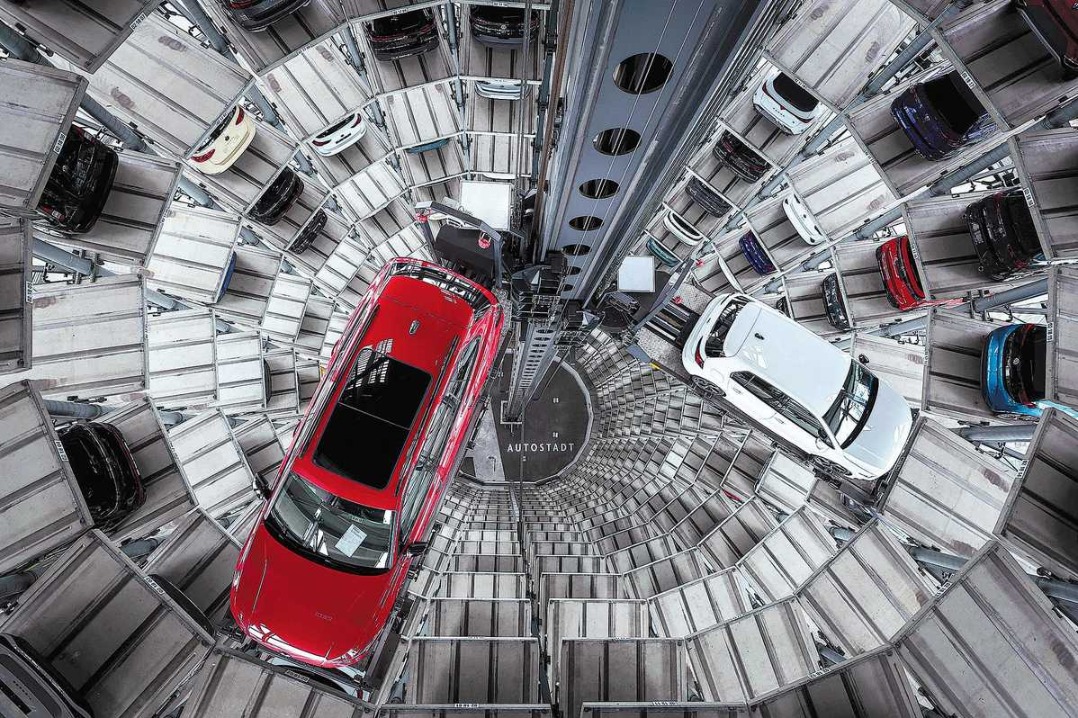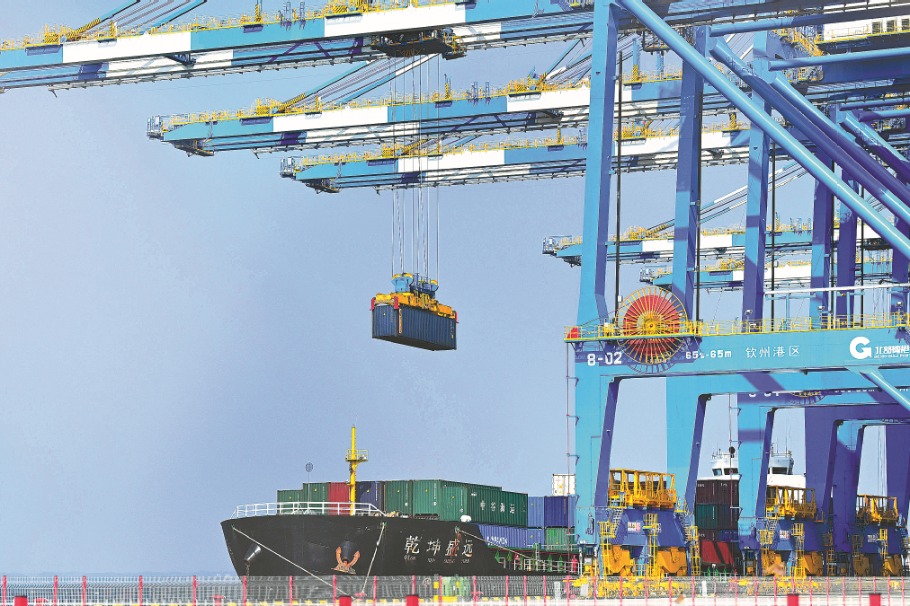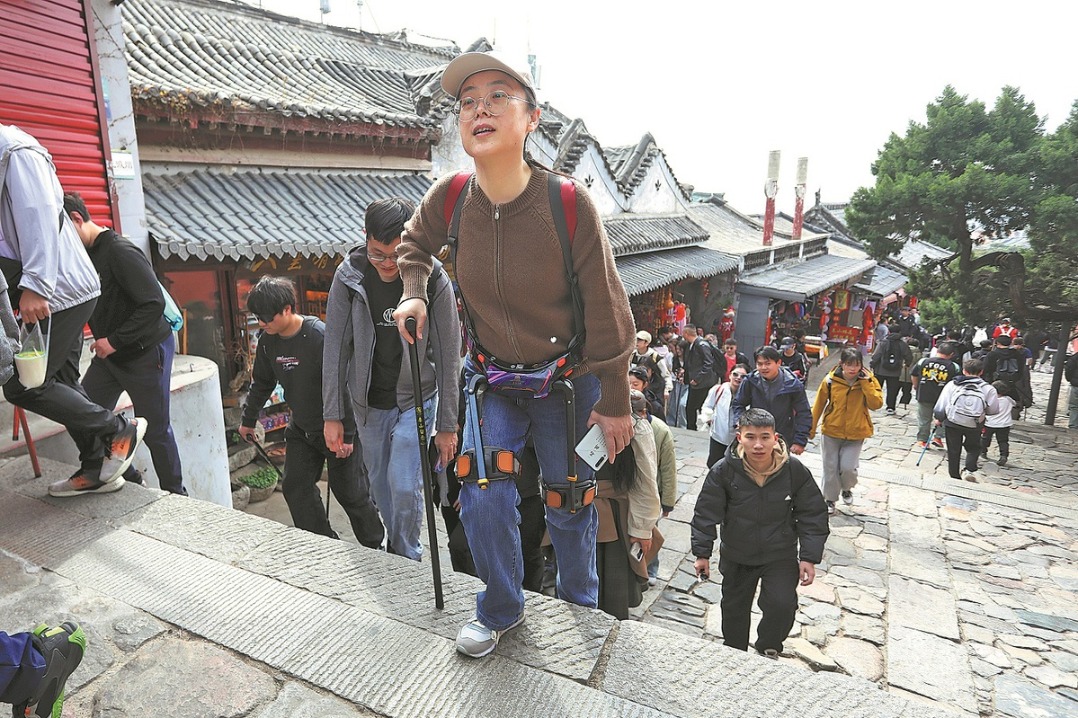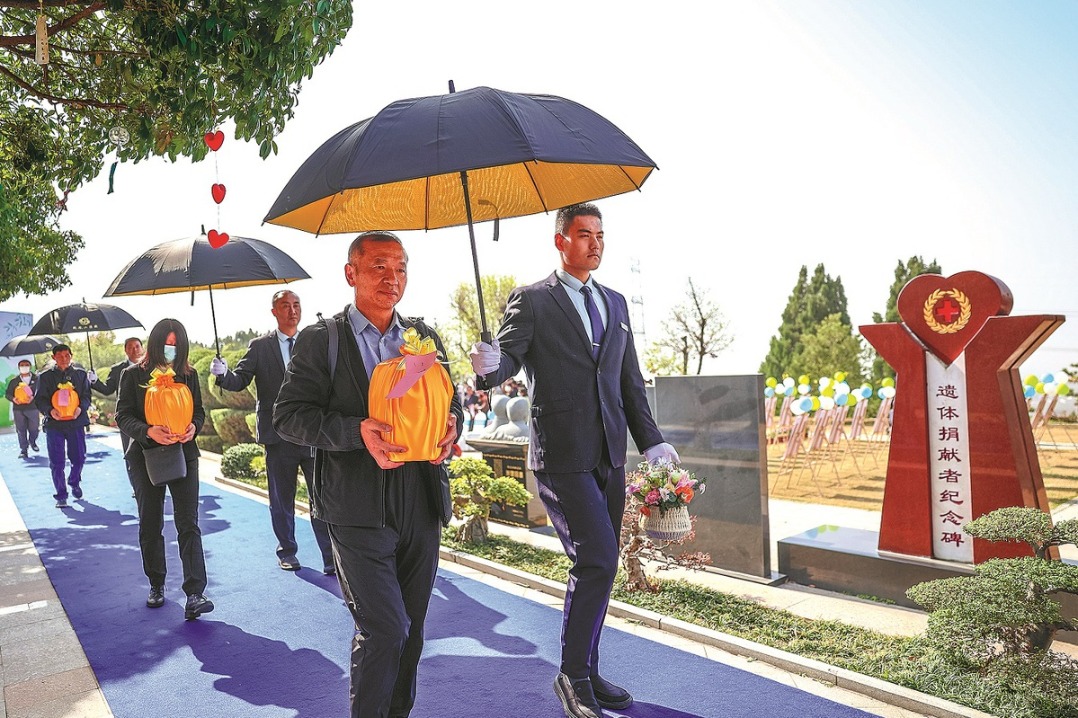Protecting the Rights and Interests of Persons with Disabilities in the PRC
China Daily | Updated: 2019-07-26 07:55

VII. Creating an Accessible Environment and Enabling Mobility
China attaches importance to creating an accessible environment and supplying and adapting assistive devices and tools. It has improved relevant laws, regulations and standards, and increased support in this regard.
A system of standards for creating an accessible environment has taken shape. After the "Design Standards of Urban Roads and Buildings for the Convenience of Persons with Disabilities (Trial)" came into effect in 1989, China has formulated the "Codes for Accessibility Design", the "Construction Acceptance and Maintenance Standards of the Barrier-free Facilities" and other national standards, and issued the "Accessibility Design Guide for Urban Public Transport Facilities" and the "Public Information Graphical Symbols for Use on Sign-Part 9: Symbols for Accessible Facilities". The administrative departments of civil aviation, rail, industry and information technology, education, and banking have drawn up construction codes for accessibility facilities in passenger terminals of civil airports, passenger railway stations, websites, telecommunications terminal devices, special education schools, and banks. In 2012, the State Council issued the Regulations on the Building of an Accessible Environment. Since the 18th CPC National Congress, legislation on creating an accessible environment has been intensified and the number of relevant laws, regulations, policies and measures has seen an obvious increase. By 2018, 475 rules and regulations on creating and managing an accessible environment had been made by authorities of provinces, prefectures (cities) and counties.
Creating an accessible environment has been expanded from pilot cities to the whole country in an orderly manner. During the 10th Five-year Plan period (2001-2005), 12 cities were selected as demonstration cities for creating an accessible environment. This was expanded to 100 cities during the 11th Five-year Plan period (2006-2010). During the 12th Five-year Plan period (2011-2015), 50 cities and counties were cited as models in building an accessible environment and 143 cities or counties were selected as models in innovative building of an accessible environment. In February 2015, the Ministry of Housing and Urban-Rural Development, Ministry of Civil Affairs, CDPF and some other ministries jointly issued the "Guiding Opinions on Improving Accessibility in Towns and Villages" to extend the campaign to rural areas. More efforts have been made to create more such models. By 2018, all municipalities directly under the central government, cities specifically designated in the state plan, and provincial capitals had started building an accessible environment. A thousand seven hundred and two cities and counties had initiated efforts to improve accessibility and remove barriers. Among comprehensive service facilities in villages or communities across the country, 75 percent of entrances, 40 percent of service counters and 30 percent of restrooms have been constructed or upgraded for accessibility. The government has also accelerated the pace of adapting the houses of families with disabled members, and improved almost 3 million of such houses between 2016 and 2018.
Information accessibility has been improved. China has drawn up national technical standards for information accessibility, and upgraded government and public service websites. The state has issued a series of national and industrial standards for persons with disabilities to use information communications equipment, to obtain online information, and to operate assistive devices, which has further completed China's system of standards in this field. China has also made efforts to enable persons with disabilities to access information on government websites. By 2018, more than 500 government departments had built accessible public service platforms, and more than 30,000 websites on government affairs and public service on had removed barriers for persons with disabilities.
The state is obligated to standardize and promote sign language and Braille. The "Outline of the Long and Medium-term Reform and Development Plan of Spoken and Written Languages of China (2012-2020)" and the "National Reform Plan of Spoken and Written Languages During the 13th Five-year Plan Period (2016-2020)" both include sign language and Braille in the overall plan. The "Lexicon of Common Expressions in Chinese National Sign Language" and the "Chinese Common Braille Scheme" were issued and came into effect in 2018. Important meetings such as the NPC plenary sessions have sign language interpretation in live broadcast, and China Media Group and some local television stations provide sign language interpretation for some important programs. In 2018, provincial and prefectural/city television stations ran 295 sign language programs, and radio stations broadcast 230 programs for persons with disabilities; and public libraries at provincial, prefectural/city and county levels had 1,124 Braille and audio rooms.
China offers preferential policies or subsidies to persons with disabilities to enable them to access information. The Ministry of Industry and Information Technology and the CDPF jointly issued the "Guiding Opinions on Supporting the Information Consumption by People with Visual, Hearing or Speech Impairments", which encourages telecommunications service providers to offer preferential plans to these specific groups, and guides large internet companies to provide convenience for these people in such domains as skills training, operations management, and information sharing, to facilitate their participation in internet-related businesses. Internet companies also make efforts to improve their online shopping experience, to share information accessibility technologies, and to give vocational skill training.
Creating an accessible environment has been promoted in key areas. The 2035 plan for a barrier-free public transport system has been launched. The Ministry of Transport adds accessibility requirements in the design standards of transport facilities such as passenger terminals, expressway service areas, ferry terminals, subway stations, city buses and subway trains. Various localities use more accessible passenger vehicles like low-floor buses and wheelchair accessible taxies, and require reserved seats for the elderly, infirm, sick, and disabled in public transport vehicles. Buses are equipped with telescreens and next-stop announcement systems in most cities, and blind guidance systems in some cities. All public transport facilities are accessible for persons with disabilities in many provinces. The rail administration reserves seats for them on more than 3,400 CRH trains, and permits visually impaired people to board with guide dogs. Financial institutions have upgraded wheelchair ramps and tactile paving, installed number calling and display systems, and set up accessible restrooms and disabled parking spaces. Post offices provide door-to-door services for persons with severe disabilities. Delivery companies send text messages to clients with hearing impairments, and deliver publications in Braille for free. The facilities and services for persons with disabilities to access the legal services have been improved. Accessibility has been upgraded in the reception rooms and judicial tribunals of courts to enable them to enjoy equal legal rights. The courts also promote information accessibility, and allow assistants to those with disabilities to appear in court when necessary.
Services for supplying and adapting assistive appliances are guaranteed by national policies. In 2016, the State Council formulated "Directives on Accelerating the Development of the Industry of Rehabilitation Assistive Appliances", and the Ministry of Finance, State Taxation Administration and Ministry of Civil Affairs jointly issued the "Notice on the Exemption of Corporate Income Tax from the Enterprises Manufacturing and Assembling the Special Products for Persons with Disabilities" to reduce the cost of such products. Local governments have formulated subsidy measures for assistive appliances and adaptation services. In 2018, 3.19 million persons with disabilities benefited from adaptation services of such assistive devices as white canes, visual aids and artificial limbs. Programs organized by governments at various levels such as Cheung Kong New Milestone Plan (for artificial limbs) and lottery-subsidized assistive tools have benefited 15 million people since 1996.
The personal mobility of persons with disabilities has been improved. The Ministry of Public Security has relaxed the restrictions preventing persons with disabilities from applying for a driving license, and 279,000 people with physical or hearing disabilities have gained licenses. "Measures for the Administration of Air Transport for Persons with Disabilities" require transport providers, airports and airport ground service agents to provide sufficient free mobility assistive facilities to enable eligible disabled persons to embark and disembark. All trains should reserve a certain quota of tickets for persons with disabilities. Visually impaired people can ride city buses for free. China has drawn up national standards for guide dogs. The government has also developed online and telephone taxi reservation services for those with disabilities.
























